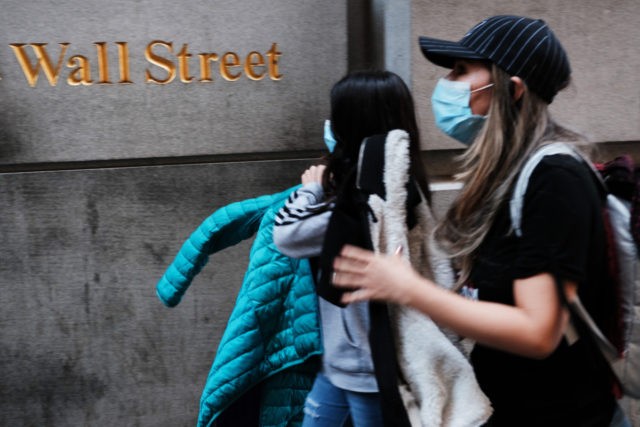U.S. stocks lurched sharply lower Monday, unable to regain their footing even after automatic market stabilizers kicked-in overnight and shortly after the market opened.
The Dow Jones Industrial Average plunged 7.8 percent, or around 2014 points. It was the largest ever point decline and the worst percentage decline since 2008. Every stock on the blue-chip index was down for the day. Exxon Mobil, Boeing, J.P. Morgan Chase, Caterpillar, and Chevron were the worst performers of the day, each down more than 12 percent.
The S&P 500 sank 7.6 percent, the most since December 2008. All 11 sectors were down. Energy, down 20 percent, was the worst-performing sector, followed by financials, down 10.9 percent.
The Nasdaq Composite swooned by around 7.3 percent.
Monday’s sell-off began Sunday night after oil prices plunged on news of an oil price war between Saudi Arabia and Russia. Last week, talks between many of the world’s big oil producers aimed at raising prices fell apart when Russia balked at reducing its own production far enough to cut into its market share.
The unprecedented and unexpected collapse of oil prices added to a sense of instability created by the spread of coronavirus and a seeming hesitancy on the part of the U.S. and European government to respond with fiscal stimulus measures to support the economy. With interest rates already very low, there may be little room for central deploy monetary policy to lift economies weighed down by the virus.
Bond yields were volatile on Monday, plummeting to record lows before bouncing back. Bond yields fall when buyers push up prices. The yield on the 10-year Treasury ended the day at 0.567 percent after touching as low as 0.30 percent and as high as 0.60 percent, a huge range for government bonds that suggests a high-degree of uncertainty about the direction of monetary policy and economic growth.

COMMENTS
Please let us know if you're having issues with commenting.